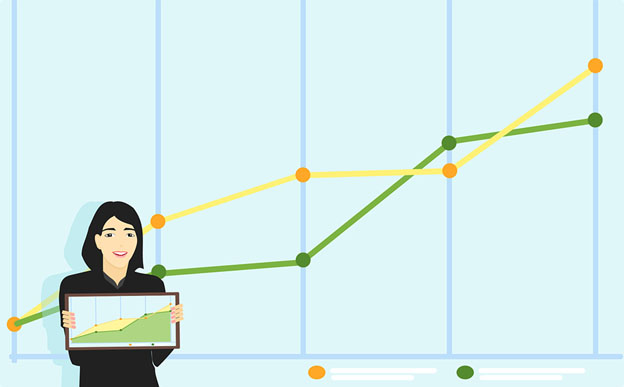Data analytics (DA) is the qualitative and quantitative techniques and processes to enhance productivity and business gain. Data is extracted to draw conclusions about the information they contain and analyze behavioral data and patterns. It is widely used in commercial industries to enable organizations to take informed based business decisions. It is used by the scientists and researchers to verify or disprove scientific models and theories.

What is about data analytics?
It is primarily a business-to-consumer (B2C) application. International organizations collect and analyze data associated with customers, business processes, market economics or practical experience. This is then categorized, stored and analyzed to study the buying trends and patterns. It is a high-velocity data and it presents unique computational and data-handling challenges. The data is collected from a multitude of sources using Big Data management solutions and customer experience management solutions that utilize data analysis to transform data into actionable insights.
It involves asking questions about data crunching, question-answering phase leading up to the decision-making phase in the overall Business Intelligence process.
Who are the data analytics?
There are skilled data analytics professionals, who generally have a strong expertise in statistics and they are called data scientists or data analyst.
Here are the seven steps that remain consistent across organizations and their data analysis processes:
Recognize business handles: The business should be willing to make changes to improve its key metrics and reach its goals as well.
Fix the objectives: It is extremely important to determine the objective like whether the business is progressing toward its goals; identify metrics or performance indicators early etc.
Data cleaning: Improve data quality to generate the right results and avoid making incorrect conclusions.
Grow a data science team: Include on your science team individuals with advanced degrees in statistics who will focus on data modeling and predictions, as well as infrastructure engineers and software developers.
Optimize and repeat: Perfect your data analysis model so you can repeat the process to generate accurate predictions, reach goals, and monitor and report consistently.
Data collection: In order to build better models and gain more actionable insights it is vital to gather as much data from diverse sources as possible.
Benefits of Data Analytics:
1- Data visualization: Graphical representations is more interesting and more insightful than columns and rows of numbers. It allows anyone to quickly grasp difficult concepts and identify new patterns within data without the need for complex analysis. They offer an immediate business advantage and effective storytelling and also can be a useful way of establishing best practice ways of looking at your data.
2- Data Diversity: More data often means more insight. But it isn’t always simple to obtain; data diversity requires tackling disparate sources, varied data sets and unstructured data. Unsurprisingly, many businesses have fallen at this hurdle. In fact, it shouldn’t matter where your data is stored – as long as you are employing the current wave of data blending tools, you can bridge the gap between all the sources. With a significantly improved delivery approach, you can create a repeatable process that takes minutes to refresh, not weeks.
3- Agile Analytics: Traditional business intelligence projects take years to come to fruition, and long-term breakdown often results in a solution that doesn’t fit the original requirements. With the advent of new tools, actionable business insights can be delivered in just months or even weeks.
4- Self Service Analytics: The rapid developments in technology the barriers have been lowered. Now, we all have the capacity to become data scientists. Every team within your business can get value out of data using widely available analytics tools.
5- Advanced Analytics: Advanced analytics is becoming increasingly prevalent, even for those without a PhD. Right now, we are working with FMCGs to automate assessments on forecasting processes, and with banks to create their own recommendation engines.
Many businesses use analytics to understand and learn from what has happened in the past. As data becomes more important to your organisation, you may move from ‘descriptive’ analytics to ‘prescriptive’, i.e. where should your business go next?
However, in today’s business climate, it’s no longer good enough to make good guesses and hope for the best. Creating a company culture based on using business analytics throughout every department helps companies stay agile. It also helps them make smarter choices on where to take the business – and how to get there. But before embarking on this journey you need to ensure that you have the right processes and tools in place. Therefore it is advisable to start by becoming confident with your historical data first, before looking towards the future.
